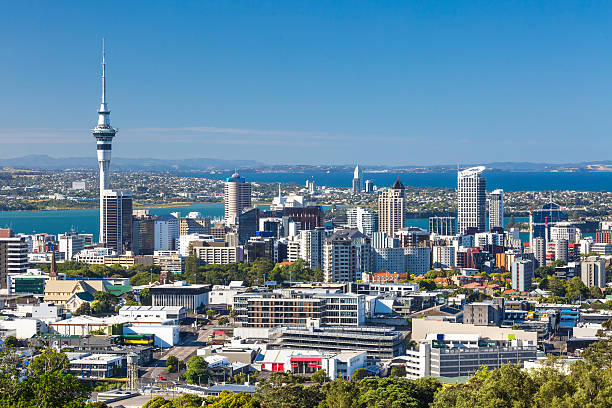The safest way for your dog to travel in the car is in a crate that has been anchored to the vehicle using a seat belt or other secure means. Cats and small animals should be kept in a suitably robust and secure carrier that allows them to sit and stand up at full height, turn around easily, and lie down in a natural position. The carrier should be properly secured in the car to stop it from moving about. Air travel can be particularly dangerous for animals with “pushed-in” faces (the medical term is “brachycephalic”), such as bulldogs, pugs, and Persian cats. Their short nasal passages leave them especially vulnerable to oxygen deprivation and heat stroke. Ensuring the safety of pets involves taking proactive measures to protect them from potential hazards, both inside and outside the home. Here are some key aspects of pet safety to consider
Before and During any animal transport, please remember to :-
- Ensure that primary enclosures are: Secure for the animal being transported.
- Follow as direct a route as possible.
- Conduct the transport promptly.
- Use appropriate discretion.
- Collar and ID Tags :- Ensure your pet wears a collar with an ID tag that includes your contact information.
- Electrical Cords :- Conceal or cover cords to prevent pets from chewing on them.
- Temperature Control :- Never leave pets in a hot or cold car. Ensure they have access to shade and water outdoors.
- Microchipping :- Microchip your pet as a permanent form of identification.
For pet travelling, there are two types of travelling journeys :
- Domestic Travel
- International Travel
Domestic Travel (Within India) :-
Domestic travel is also called internal travel. Internal travel is the act of travelling within the borders of one’s own country, as opposed to crossing international boundaries. Travelling with a pet from Mumbai to Goa can be a fun and rewarding experience with proper planning and preparation. Here are some tips and tricks to ensure a safe and comfortable journey for both you and your pet.
Pre-Trip Preparation
Visit the Vet :-
- Health Check-Up :- Ensure your pet is in good health for travel.
- Vaccinations :- Make sure vaccinations are up-to-date.
- Travel Documents :- Obtain any necessary travel certificates.
- Medications :- Ask for any medications to keep your pet calm or to address motion sickness.
Travel Carrier :-
- Choose a well-ventilated, sturdy, and comfortable carrier.
- Introduce your pet to the carrier well before the trip to get them accustomed to it.
Identification :-
- Ensure your pet has a collar with an ID tag including your contact information.
- Consider microchipping for added safety.
Packing Essentials :-
- Food and Water :- Pack enough for the trip
- Bowls :- Collapsible bowls are convenient.
- Leash and Harness :- For walks during breaks.
- Comfort Items :- Favorite toys, blankets, or beds.
- Waste Bags and Litter Box :- For cats, bring a portable litter box.
Travel Options
By Car :-
- Comfort Stops :- Plan for regular breaks every 2-3 hours for your pet to stretch, relieve themselves, and drink water.
- Safety :- Use a pet seatbelt or secure the carrier to prevent movement.
- Temperature Control :- Never leave your pet in a parked car; ensure the car is well-ventilated and maintains a comfortable temperature.
By Train :-
- Booking :- Indian Railways allows pets in First Class compartments. Book in advance as spaces are limited.
- Rules :- Adhere to the railway’s rules for travelling with pets. You may need to book the entire compartment.
- Comfort :- Bring a blanket or bed for your pet to rest on during the journey.
By Air :-
- Airline Policy :- Check the specific airline’s pet travel policy.
- Booking :- Notify the airline in advance and book a pet-friendly flight.
- Carrier :- Use an airline-approved carrier. Ensure your pet is comfortable inside it.
- Pre-Flight :- Feed your pet a light meal a few hours before the flight, and ensure they are well-hydrated.
During the Journey
Food and Water :-
- Feed your pet a few hours before travel to prevent motion sickness.
- Offer small amounts of water regularly.
Exercise :-
- Give your pet a chance to exercise before the trip to burn off energy.
Calm Environment :-
- Keep the environment calm and quiet.
- Talk to your pet reassuringly during the journey.
Monitor Health :-
- Watch for signs of stress or discomfort.
- Have a first-aid kit ready for any emergencies.
Post-Arrival
Acclimatize :-
- Allow your pet to explore the new environment slowly.
- Keep familiar items around to comfort them.
Routine :-
- Try to stick to their regular feeding and walking schedule.
Local Vet :-
- Identify a local vet in Goa in case of emergencies.
International Travel (out of India) :-
An international journey means a Journey commencing when a Person Insured passes through passport control from within the Country of Domicile, to the Destination(s), A passport is required for all international travel. If you’re travelling anywhere overseas, you need a passport to board an international flight and enter the country. Passport cards will not be accepted as a form of I.D. for international air travel. Travelling with a pet from India to the USA requires careful planning and adherence to various regulations to ensure a safe and comfortable journey. Your pet can travel on the plane with you either in-cabin, as accompanied baggage or as cargo. Your pet will be charged accordingly. Some airlines no longer offer this option and some countries do not allow pets to enter the country in-cabin. A maximum of two pets are permitted in-cabin per flight, being accommodated on the last rows of Business Class and Economy Class respectively. Passengers must accompany their pets. Pet dogs must be muzzled or leashed. Pets or guide dogs will not be allowed to take up a passenger’s seat. Here are some tips and tricks to help you prepare.
Pre-Trip Preparation
Health and Documentation :-
- Veterinary Check-Up :- Schedule a thorough health check-up with your vet.
- Vaccinations :- Ensure all vaccinations are up-to-date, especially rabies.
- Health Certificate :- Obtain an International Health Certificate endorsed by the Animal Quarantine and Certification Service (AQCS) in India, usually issued within 10 days before departure.
- Microchipping :- Ensure your pet is microchipped as per ISO 11784/11785 standards, required by US regulations.
Research Airline Policies :-
- Check the specific airline’s pet travel policies regarding in-cabin and cargo transport.
- Confirm breed restrictions and carrier size requirements.
Travel Carrier :-
- Choose an IATA-approved pet carrier.
- Ensure it’s well-ventilated, sturdy, and comfortable for your pet.
Booking Flights :-
- Book a direct flight if possible to minimise travel time and stress for your pet.
- Inform the airline in advance that you will be travelling with a pet.
Preparing for the Journey
Acclimatise Your Pet :-
Get your pet used to the travel carrier well before the trip by letting them spend time in it.
Packing Essentials :-
- Food and Water :- Enough for the journey and a few extra days.
- Bowls :- Collapsible and easy to use.
- Leash and Harness :- For exercise during layovers or breaks.
- Comfort Items :- Favourite toys, blankets, or beds to reduce stress.
- Waste Bags and Litter Box :- If applicable.
Comfort and Safety :-
- Exercise :- Give your pet plenty of exercise before the trip.
- Feeding :- Feed your pet a light meal a few hours before travel to prevent motion sickness.
- Calm Environment :- Keep the environment calm to minimise stress.
At the Airport
Flights:-
- Air India
- JetBlue
- Delta, etc
Arrival Time :-
Arrive at the airport early to allow plenty of time for check-in and security procedures.
Security Screening :-
Be prepared to take your pet out of the carrier for security screening.
Hydration and Comfort :-
Ensure your pet has access to water up to the time of departure.
During the Flight
In-Cabin :-
- If your pet is travelling in a cabin, keep the carrier under the seat in front of you.
- Check on your pet periodically and offer water if allowed.
Cargo :-
- For pets travelling in cargo, ensure the carrier is labelled with your contact information and “Live Animal” stickers.
- Provide a soft blanket and absorbent material in the carrier.
Arrival in the USA
Customs and Quarantine :-
- Upon arrival, present the health certificate and other documents to US Customs and Border Protection.
- Be aware of any quarantine requirements specific to the state you are entering.
Acclimatisation :-
- Allow your pet to acclimate to the new environment gradually.
- Keep familiar items around to comfort them.
Routine :-
Maintain their regular feeding and exercise schedule as much as possible.
Local Vet :-
Identify a local veterinarian in case of emergencies and schedule a check-up soon after arrival.
The difference between Domestic Travel and International Travel
By understanding these differences, you can better prepare for travelling with your pet within India or internationally, ensuring a safe and comfortable journey for your furry companion.
- Regulations and Documentation
- Airline Policies and Transportation
- Preparation and Packing
- Accommodations and Local Considerations
- Arrival and Settling
- Cost
- Emergency and Veterinary Care
Regulations and Documentation
Domestic Travel (Within India) | International Travel (India to the USA) |
Health Certificate : Generally, a basic health certificate from a veterinarian is sufficient.
| Health Certificate : An International Health Certificate endorsed by the Animal Quarantine and Certification Service (AQCS) in India is required, usually issued within 10 days before departure.
Quarantine : Depending on the destination country’s regulations, there may be quarantine requirements |
Airline Policies and Transportation
Domestic Travel (Within India) | International Travel (India to the USA) |
Airlines : Indian airlines have specific policies for pet travel. Pets can usually travel in the cabin, as checked baggage, or in cargo, depending on the size and breed.
| Airlines : Each international airline has its own set of regulations for pet travel. Pets can travel in-cabin, as checked baggage, or in cargo, depending on the airline and the size of the pet.
|
Preparation and Packing
Domestic Travel (Within India) | International Travel (India to the USA) |
Duration : Shorter travel times generally require less preparation.
| Duration : Longer travel times and potential layovers require thorough preparation.
|
Accommodations and Local Considerations
Domestic Travel (Within India) | International Travel (India to the USA) |
Pet-Friendly Accommodations : Easier to find and usually with fewer restrictions.
| Pet-Friendly Accommodations : Research and book in advance as policies vary widely.
|
Arrival and Settling
Domestic Travel (Within India) | International Travel (India to the USA) |
Acclimatisation : Typically easier as the environment is more familiar.
| Customs and Quarantine : Must go through customs and comply with any quarantine regulations.
|
Cost
Domestic Travel (Within India) | International Travel (India to the USA) |
Lower Cost : Generally less expensive due to shorter distances and fewer regulatory requirements.
| Higher Cost : Includes airfare, health certificates, microchipping, possible quarantine costs, and international vet fees.
|
Emergency and Veterinary Care
Domestic Travel (Within India) | International Travel (India to the USA) |
Veterinary Care : Easier access to familiar veterinary services.
| Veterinary Care : Research and identify a local vet in advance.
|
Looking for a Visa? Get in Touch with Us Today!







